Directions (1-15): The question consists of two statements numbered I and II given below it. You have to decide whether the data provided in the statements are sufficient to answer the question.
Q1. Seven people (A, B, C, D, E, F and G) are sitting around a circular table such that all are facing inside and two consecutive alphabetical named persons doesn’t sit immediate next to each other. Who is sitting third to the left of A?
Statements:
I. B is sitting second to the right of A. D is sitting immediate left of A. E is sitting adjacent to C.
II. E is sitting second to the right of F. G is sitting adjacent to D. B is sitting immediate right of F. A sits immediate right of D.
(a) The data in statement I alone are sufficient to answer the question, while the data in statement II alone are not sufficient to answer the question.
(b) The data in statement II alone are sufficient to answer the question, while the data in statement I alone are not sufficient to answer the question.
(c) The data either in statement I alone or in statement II alone are sufficient to answer the question.
(d) The data given in statements I and II together are not sufficient to answer the question.
(e) The data in statements I and II together are necessary to answer the question.
Q2. Eight people (A, B, C, D, E, F, G and H) are sitting around a square table (but not necessarily in the same order) such that four people are sitting at each corner while others are sitting at the middle of each side. All of them are facing towards the center of the table. Who is sitting opposite to A?
Statements:
I. C is sitting third to the right of A who is sitting at the side. D is sitting immediate right of B who is sitting opposite to F. H is sitting third to the right of E.
II. B is sitting adjacent to A. G is sitting adjacent to H. F is sitting third to the right of D.
(a) The data in statement I alone are sufficient to answer the question, while the data in statement II alone are not sufficient to answer the question.
(b) The data in statement II alone are sufficient to answer the question, while the data in statement I alone are not sufficient to answer the question.
(c) The data either in statement I alone or in statement II alone are sufficient to answer the question.
(d) The data given in statements I and II together are not sufficient to answer the question.
(e) The data in statements I and II together are necessary to answer the question.
Q3. Seven boxes (A, B, C, F, G, H and I) are kept one above the other bot not in the same order as given. The bottommost box is numbered as 1, just above it is numbered as 2 and so on till the topmost box is numbered as 7. How many boxes are kept between A and H?
Statements:
I. Three boxes are kept below box G. Box B is kept adjacent to box G. Two boxes are kept between box F and box B. Box C is three boxes above box H.
II. Two boxes are kept between box G and box I. Number of boxes kept between box C and box A is an even number. Box I is not kept at the bottom.
(a) The data in statement I alone are sufficient to answer the question, while the data in statement II alone are not sufficient to answer the question.
(b) The data in statement II alone are sufficient to answer the question, while the data in statement I alone are not sufficient to answer the question.
(c) The data either in statement I alone or in statement II alone are sufficient to answer the question.
(d) The data given in statements I and II together are not sufficient to answer the question.
(e) The data in statements I and II together are necessary to answer the question.
Q4. Seven persons (P, Q, R, S, T, U and V) were born on 1st day of seven different months (February, March, April, May, June, July, and August) of the same year but not necessarily in the same order. Which of the following statement is abundant to find who was born in March?
Statements:
I. P was born immediately before T. Three persons were born between T and V. Both V and R were born in consecutive months having 31 days.
II. Only R was born after V. Two persons were born between R and Q. P was born three months before Q. U was born before S but after T.
(a) The data in statement I alone are sufficient to answer the question, while the data in statement II alone are not sufficient to answer the question.
(b) The data in statement II alone are sufficient to answer the question, while the data in statement I alone are not sufficient to answer the question.
(c) The data either in statement I alone or in statement II alone are sufficient to answer the question.
(d) The data given in statements I and II together are not sufficient to answer the question.
(e) The data in statements I and II together are necessary to answer the question.
Q5. Seven boxes (S1, S2, S3, S4, S5, S6, and S7) are kept above one another but not in the same order. The bottommost box is numbered 1, just above it is numbered as 2 and so on till the topmost box is numbered as 7. How many boxes are kept below Box S3.
Statements:
I. Only three boxes are kept below S7. S4 is kept two places above S7. Two boxes are kept between S1 and S3. S3 is kept above S7.
II. S4 is 6th box. Three boxes are kept between S4 and S1. One box is kept between S1 and S7. S3 is kept adjacent to S7.
(a) The data in statement I alone are sufficient to answer the question, while the data in statement II alone are not sufficient to answer the question.
(b) The data in statement II alone are sufficient to answer the question, while the data in statement I alone are not sufficient to answer the question.
(c) The data either in statement I alone or in statement II alone are sufficient to answer the question.
(d) The data given in statements I and II together are not sufficient to answer the question.
(e) The data in statements I and II together are necessary to answer the question.
Q6. Seven persons P, Q, R, S, T, U, and V are living in a seven- floor building such that the bottommost floor is numbered as 1, just above it is numbered as 2 and so on till the topmost floor is numbered as 7 but not necessarily in the same order. How many persons live between S and T?
Statements:
I. Two persons live between S and P who lives on the 4th floor. Three persons live between S and Q. T lives on one of the floors above Q.
II. T lives on one of the even number floors above the 4th floor. Three persons lives between T and Q. S lives on a floor adjacent to Q.
(a) The data in statement I alone are sufficient to answer the question, while the data in statement II alone are not sufficient to answer the question.
(b) The data in statement II alone are sufficient to answer the question, while the data in statement I alone are not sufficient to answer the question.
(c) The data either in statement I alone or in statement II alone are sufficient to answer the question.
(d) The data given in statements I and II together are not sufficient to answer the question.
(e) The data in statements I and II together are necessary to answer the question.
Q7. Six persons M, N, O, P, Q, and R are sitting in a straight row facing north but not necessarily in the same order. Who sits 3rd to the right of M?
Statements:
I. R sits 2nd to the left of P who sits 3rd from the right end of the row. Three persons sits between R and O. M does not sit adjacent to P.
II. R sits immediate left of M who sits 4th to the left of Q. One person sits between P and N.
(a) The data in statement I alone are sufficient to answer the question, while the data in statement II alone are not sufficient to answer the question.
(b) The data in statement II alone are sufficient to answer the question, while the data in statement I alone are not sufficient to answer the question.
(c) The data either in statement I alone or in statement II alone are sufficient to answer the question.
(d) The data given in statements I and II together are not sufficient to answer the question.
(e) The data in statements I and II together are necessary to answer the question.
Q8. There are seven members in a family. Who is the father-in-law of U?
Statements:
I. R is the daughter of Q who is married to the son of P. H and Q are the children of M. U is the only son-in-law of O. H and M are male members.
II. O is married to Q who is the mother of U. P and Q are siblings. U is married to I who is the son of M. M has two children.
(a) The data in statement I alone are sufficient to answer the question, while the data in statement II alone are not sufficient to answer the question.
(b) The data in statement II alone are sufficient to answer the question, while the data in statement I alone are not sufficient to answer the question.
(c) The data either in statement I alone or in statement II alone are sufficient to answer the question.
(d) The data given in statements I and II together are not sufficient to answer the question.
(e) The data in statements I and II together are necessary to answer the question.
Q9. Six persons (A, B, C, D, E and F) have different number of marbles (12, 24, 36, 40, 44 and 48) but not necessarily in the same order. Who has 24 marbles?
Statements:
I. D has 8 more marbles than E. C has twice number of marble than B. F has 4 more marbles than D. A doesn’t have 12 marbles.
II. A has 28 more marbles than B. A has 4 more marbles than E. D has 4 marbles less than F.
(a) The data in statement I alone are sufficient to answer the question, while the data in statement II alone are not sufficient to answer the question.
(b) The data in statement II alone are sufficient to answer the question, while the data in statement I alone are not sufficient to answer the question.
(c) The data either in statement I alone or in statement II alone are sufficient to answer the question.
(d) The data given in statements I and II together are not sufficient to answer the question.
(e) The data in statements I and II together are necessary to answer the question.
Q10. Seven shelves (T1, T2, T3, T4, T5, T6, and T7) are above one another in a cupboard but not necessarily in the same order. The bottommost shelf is numbered as 1, just above it is numbered as 2 and so on till the topmost shell is numbered as 7. How many shelves are between T3 and T4?
Statements:
I. Three shelves are above T3. One shelf is between T2 and T3. T4 is three places above T5. T4 is not a prime numbered shelf.
II. T5 is 3rd shelf. Two shelves are between T4 and T5. T1 and T6 is immediately above and immediately below T4 respectively. T3 is above T2.
(a) The data in statement I alone are sufficient to answer the question, while the data in statement II alone are not sufficient to answer the question.
(b) The data in statement II alone are sufficient to answer the question, while the data in statement I alone are not sufficient to answer the question.
(c) The data either in statement I alone or in statement II alone are sufficient to answer the question.
(d) The data given in statements I and II together are not sufficient to answer the question.
(e) The data in statements I and II together are necessary to answer the question.
Q11. Seven functions (A, B, C, D, E, F, and G) were held on seven different days of the same week starting from Monday but not necessary in the same order. B was held on which of the day?
Statements:
I. G was held on Friday. Two functions were held between G and F. B was held three days before A.
II. C was held three days before D. D was held three days before E. G was held two days after B.
(a) The data in statement I alone are sufficient to answer the question, while the data in statement II alone are not sufficient to answer the question.
(b) The data in statement II alone are sufficient to answer the question, while the data in statement I alone are not sufficient to answer the question.
(c) The data either in statement I alone or in statement II alone are sufficient to answer the question.
(d) The data given in statements I and II together are not sufficient to answer the question.
(e) The data in statements I and II together are necessary to answer the question.
Q12. Seven persons (A, K, B, D, C, G, and S) live in a seven-floor building such that the bottommost floor is numbered as 1, just above it is numbered as 2 and so on till the topmost floor is numbered as 7 but not necessarily in the same order. Who lives immediately above S?
Statements:
I. Two persons live between G and A. A lives immediately below K. S lives three floors above C.
II. K lives immediately below C. C lives on 3rd floor. Two persons live between K and B. D lives two floors above B. S lives above A and G.
(a) The data in statement I alone are sufficient to answer the question, while the data in statement II alone are not sufficient to answer the question.
(b) The data in statement II alone are sufficient to answer the question, while the data in statement I alone are not sufficient to answer the question.
(c) The data either in statement I alone or in statement II alone are sufficient to answer the question.
(d) The data given in statements I and II together are not sufficient to answer the question.
(e) The data in statements I and II together are necessary to answer the question.
Q13. Seven boxing teams (M, N, O, P, Q, R and S) played different number of matches in a tournament but not in the same order as given. Which team played the 2nd lowest number of matches?
Statements:
I. M played the 4th lowest number of matches. Only O and S played more matches than R. N played more matches than Q.
II. S played more matches than R and M. O played the highest number of matches. Only three teams played more matches than M. N played more matches than Q and P.
(a) The data in statement I alone are sufficient to answer the question, while the data in statement II alone are not sufficient to answer the question.
(b) The data in statement II alone are sufficient to answer the question, while the data in statement I alone are not sufficient to answer the question.
(c) The data either in statement I alone or in statement II alone are sufficient to answer the question.
(d) The data given in statements I and II together are not sufficient to answer the question.
(e) The data in statements I and II together are necessary to answer the question.
Q14. Seven batches A, B, C, D, E, F and G (not in the same order as given) of KBC tuition, started on same day in seven months i.e., January, February, March, April, May, June and July of year 2022. How many batches started before F?
Statements:
I. Only two batches started after A. B started two months before A. C started immediately after E. D does not start in the month which has only 30 days. G started two months before F.
II. E started two months before B. G started immediately after B. D started three after months G. F started after A.
(a) The data in statement I alone are sufficient to answer the question, while the data in statement II alone are not sufficient to answer the question.
(b) The data in statement II alone are sufficient to answer the question, while the data in statement I alone are not sufficient to answer the question.
(c) The data either in statement I alone or in statement II alone are sufficient to answer the question.
(d) The data given in statements I and II together are not sufficient to answer the question.
(e) The data in statements I and II together are necessary to answer the question.
Q15. Seven plants (P, Q, R, S, T, U and V) are planted at certain distance from each other in a park. Plant U is in which direction with respect to plant S?
Statements:
I. Plant P is 12m west of U which is 5m south of Q. Plant V is west of Plant P.
II. Plant V is 15m south of Plant U which is 7m west of Plant T. Plant R is south of Plant T.
(a) The data in statement I alone are sufficient to answer the question, while the data in statement II alone are not sufficient to answer the question.
(b) The data in statement II alone are sufficient to answer the question, while the data in statement I alone are not sufficient to answer the question.
(c) The data either in statement I alone or in statement II alone are sufficient to answer the question.
(d) The data given in statements I and II together are not sufficient to answer the question.
(e) The data in statements I and II together are necessary to answer the question.
Solutions
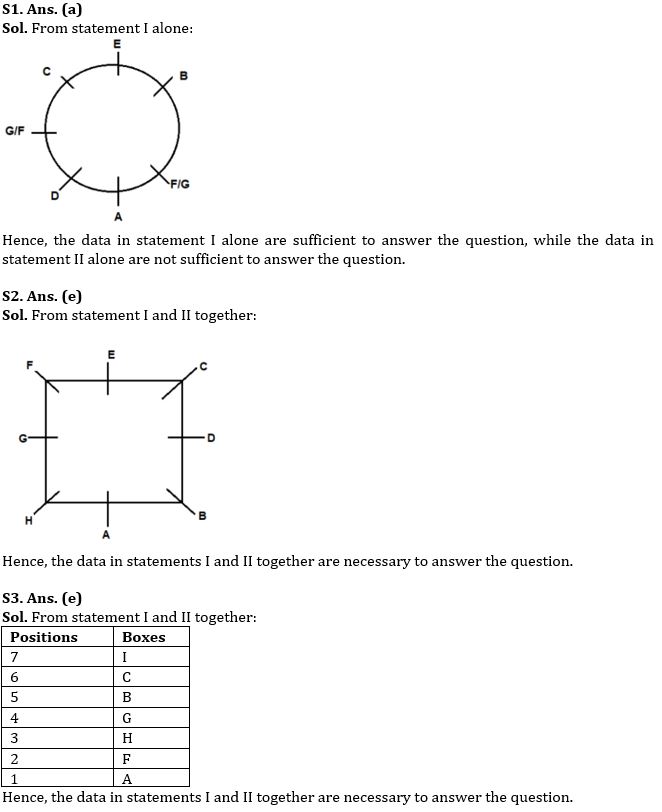
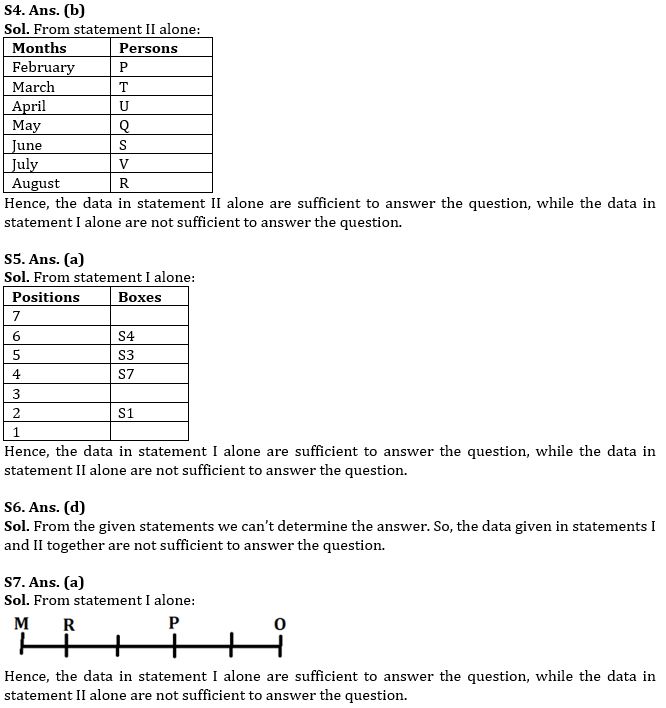
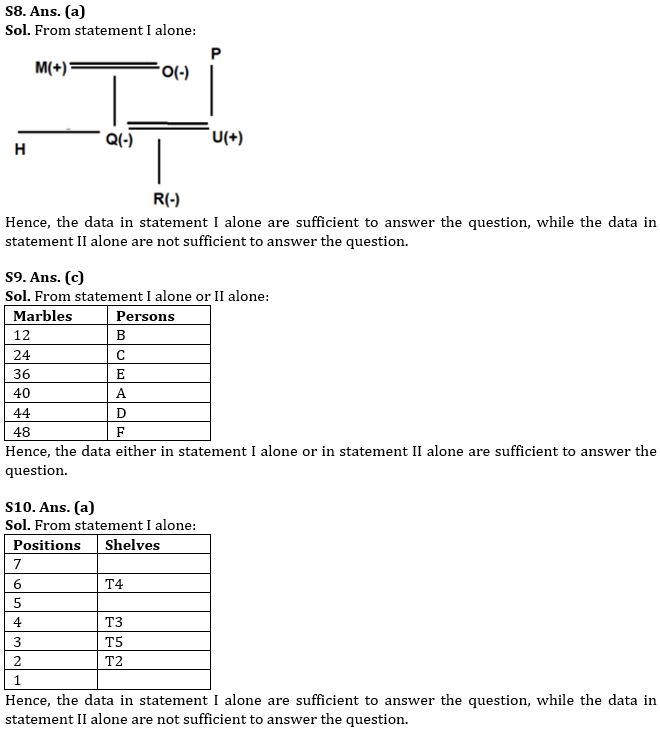
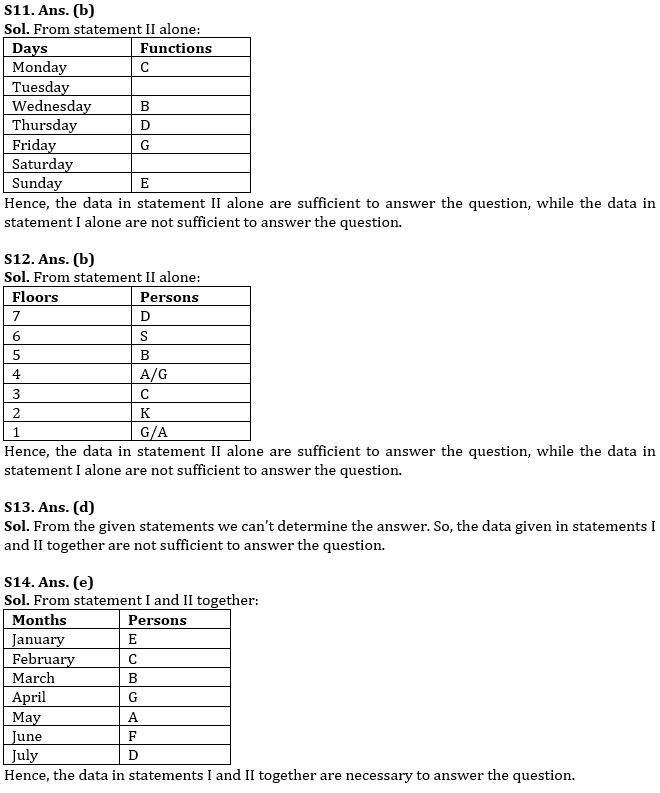

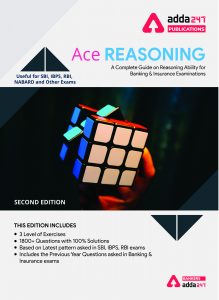


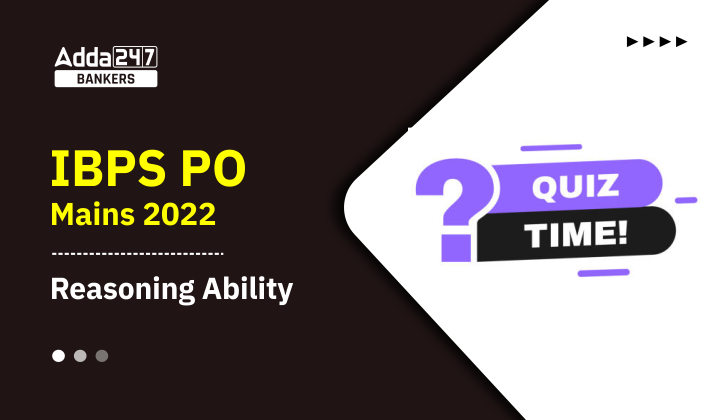

 50+ Data Sufficiency Questions For Bank ...
50+ Data Sufficiency Questions For Bank ...
 Quantitative Aptitude Quiz For Bank Main...
Quantitative Aptitude Quiz For Bank Main...


